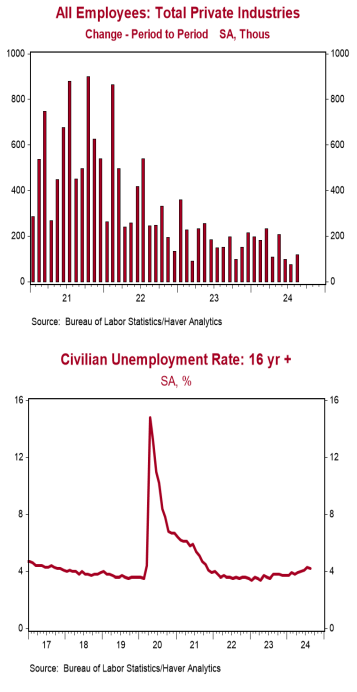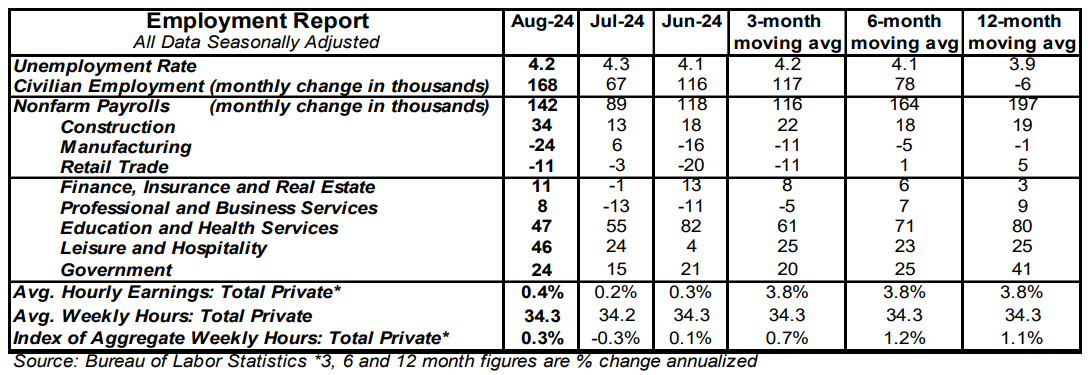- Nonfarm payrolls increased 142,000 in August, lagging the consensus expected 165,000. Payroll gains for June and July were revised down by a total of 86,000, bringing the net gain, including revisions, to 56,000.
- Private sector payrolls rose 118,000 in August but were revised down by 62,000 in prior months. The largest increases in August were in leisure & hospitality (+46,000), health care & social assistance (+44,000), and construction (+34,000). Government rose 24,000 while manufacturing fell 24,000.
- The unemployment rate ticked down to 4.2% in August from 4.3% in July.
- Average hourly earnings – cash earnings, excluding irregular bonuses/commissions and fringe benefits – rose 0.4% in August and are up 3.8% versus a year ago. Aggregate hours increased 0.3% in August and are up 1.1% from a year ago.
Implications: The Fed is almost certainly going to start cutting rates on September 18, the only issue is by how much. Today’s report on the labor market suggests the first cut will be by 25 basis points, instead of half a percentage point. Dark clouds are appearing on the horizon, but job growth continued in August, the unemployment rate ticked down slightly, and wage growth accelerated. The news on jobs was mixed. Nonfarm payrolls increased 142,000 in August, but revisions to June/July brought the net gain down to a modest 56,000. We like to follow payrolls excluding government (because it's not the private sector), education & health services (because it rises for structural and demographic reasons, usually doesn’t decline even in recession years, and is often responding to government policies), and leisure & hospitality (which is still recovering from COVID Lockdowns). That “core” measure of payrolls rose only 25,000 in August and is up only 31,000 total in the past three months. However, civilian employment, an alternative measure of jobs that includes small-business start-ups, rose 168,000 in August, the largest gain in five months. As a result, the unemployment rate ticked down to 4.2% for the month. The problem with civilian employment is that it’s down 66,000 from a year ago, with the employment of full-time workers down 1.0 million. By contrast, even with the preliminary benchmark revision announced recently, payrolls are up about 1.9 million in the past year. The most positive news in today’s report is that average hourly earnings climbed 0.4% and are up 3.8% from a year ago, which means more purchasing power for workers and pay increases that have outstripped inflation in the past twelve months. Another bright spot in August is a 0.3% gain in total hours worked, which are up 1.1% from a year ago. Given that monetary policy is now tight, the economy and inflation are both decelerating, and it takes time for shifts in monetary policy to influence growth and inflation we expect the Fed to start cutting rates in September and continue to do so at the meetings beyond.





